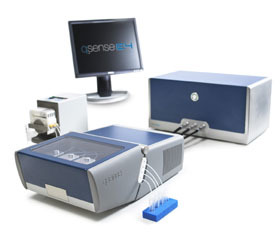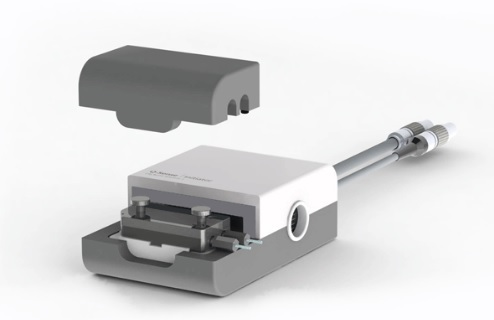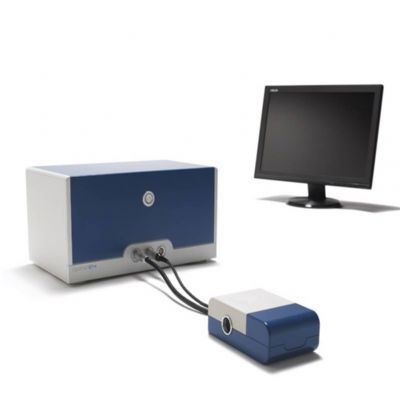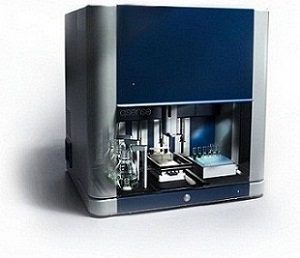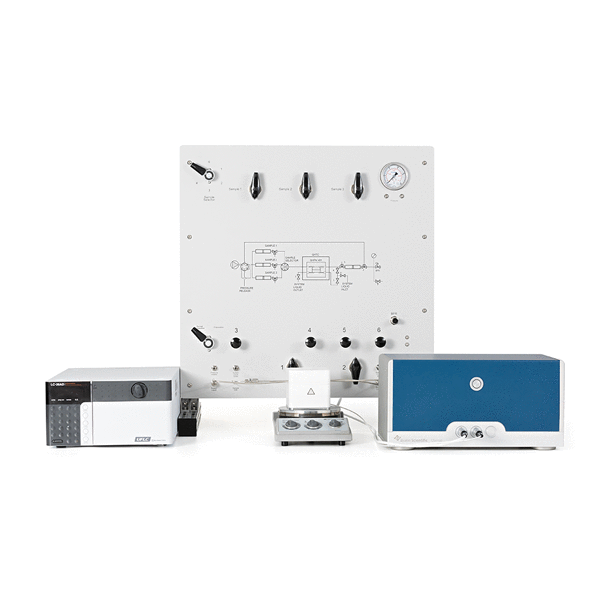方案详情
文
高分子刷和其它薄膜的水合和脱水状态之间的转变可以通过如QCM-D等技术来评估,QCM-D可以根据质量的变化来感知水分的吸收和释放。
方案详情

Biolin Scientific[ Progress Together] [Application Note] 34 Characterization of polymer layer swelling and collapse by the QCM-D technology Surface coatings can be applied to a bulk material to add desirable properties suchas biocompatibility, responsiveness to various stimuli, drug delivery capabilities andantibacterial qualities. Polymer brushes, which respond to changes in temperature,pH and ionic strength have been of great interest as surface coatings for biomedicaland biological applications. In this study, the QCM-D technology was successfullyused to track and understand the mechanism of swelling and collapse of polymerbrushes. Chitosan (CH) brush layers are an attractive coating becausechitosan is both bio-compatible and biodegradable. Chitosan iswater-soluble at low pH but is a collapsed coil that is insolublein water at pH above 6.5. The rheological properties, solubilityand swelling of chitosan depend on pH and counter-anion size,because both parameters directly affect the extent of intra- andintermolecular electrostatic repulsions. Due to its limited solubilitynear physiological conditions (pH~7), chitosan has not been fullyutilized as a biomaterial coating. To make chitosan water-solubleabove pH 6.5 the molecule can be modified with quaternaryammonium salts (CH-Q). In the study reviewed here, the aimwas to understand the mechanism of brush swelling for chitosanand modified chitosans. The Quartz Crystal Microbalance withDissipation (QCM-D) technology was used to study the thicknessof the polymer brushes as they were exposed to different ambientconditions. Experimental Reference measurements The E4 QCM-D instrument was used with silicon dioxide sensors.The sensors were subjected to silane deposition and CH andCH-Q were grafted onto the silane layer. In order to calculate theextent of swelling in aqueous media, the initial dry thickness ofthe polymer brush was determined by QCM-D measurements andthe Sauerbrey equation that relates mass changes to frequencychanges. Results In situ swelling of the polymer brushes - effect of pH andcounteranion type The chitosan polymer brush coated sensor was subjected tosolutions of different pH and counter-anion type. The measuredfrequency (related to mass) and dissipation (related to rigidity)values were used in the Voigt viscoelastic model to determine the thickness of the layer during swelling and contraction (Figure1). At low pH, the CH layer swells and becomes more viscous,whereas at higher pH (pH 7.06 and 8.20), the CH layer is elasticand rigid. In order to study the effect of counter-anion type on theviscoelastic and swelling properties of the CH brush layer, itwas exposed to a solution at pH 3.85 containing acetate anions(CH,CO, ) (arrow 6) for comparison with the behavior whenexposed to a solution at pH 3.63 containing chloride anions(arrow 1). The larger counter-anions (CH,CO,) induce the layer to becomemore viscous and swell to a greater extent than the smallercounter-anions (CF). [Figure 1]: (a) Frequency (f) and dissipation (D) shifts (for overtone 3, 5 and 7)of a CH brush versus time as a function of sequential changes of solution pHand counter-anion type. (b) Thickness determined with the Voigt viscoelasticmodel versus time. (c) Illustrations showing collapsed (left) and swollen brushes(right), respectively. It is also observed that the swelling is reversible. To summarize,these studies demonstrated that the immobilized CH layer ischemically stable over a wide range of pH values and exhibitreversible swelling and contraction that can be tuned by varyingthe pH of the solution and counter-anion type. The same kind of study was performed on CH-Q to compare withunmodified CH. The results for one kind of modification (CH-Q25)can be seen in Figure 2. As the pH decreases, the CH-Q25 brushbecomes more viscous and swells, whereas at higher pH, in therange of 7.06 to 8.20, CH-Q25 is more elastic and rigid. Arrow nrpHchange7.06 to 4.05 (acetate)2 4.05 to 4.08 (citrate)3 4.08 to 7.06 [Figure 3]: Thicknesses of CH (a) andCH-Q25(b) brush layers as a function ofsequential changes in solution pH andcounter-anion. The thicknesses of CH andCH-Q25 were determined with the Voigtviscoelastic model. [Figure 4]: Schematic showing the structure of the chitosan brush layer as afunction of pH and counter- anion type. References: [1] Hyun-Su Lee, Michael Q. Yee, Yonaton Y. Eckmann, Noreen J. Hickok,David M. Eckmann and Russell J. Composto. Reversible swelling of chitosanand quaternary ammonium modified chitosan brush layers: effects of pHand counter anion size and functionality. J. Mater. Chem, 2012, 22, 19605. []Q-Sense AN 聚电解质多层膜和水凝胶等高分子刷通常用于获取如生物相容性、防污性和药物传输能力等所需性质。多层构象和水合度是影响其界面性质的关键参数。在这里,我们展示了一种直接的方法,用于测量水合和脱水状态即溶胀和塌缩之间的转变。实时表征高分子刷的溶胀和塌缩高分子刷和其它薄膜的水合和脱水状态之间的转变可以通过如QCM-D等技术来评估,QCM-D可以根据质量的变化来感知水分的吸收和释放。例如,用QCM-D分析壳聚糖高分子刷的溶胀和塌缩。 壳聚糖刷的构象取决于pH值和反阴离子的大小。在低pH值时,高分子刷是水溶性的,而在pH值大于6.5时,高分子刷转变为不溶于水的塌缩线团。在这个实验中,首先将壳聚糖接枝到QCM-D芯片上, 然后将高分子刷置于不同pH值和反阴离子尺寸的溶液中,测量膜层厚度。测量结果如图1所示。从图中可以看出,高分子刷在低pH值时溶胀,在高pH值时塌缩。还可以看出,溶胀和塌缩状态之间的转变是可逆的,尺寸大的反阴离子比小的反阴离子更容易引起溶胀。 图1:图中显示了壳聚糖高分子刷在不同pH值和反阴离子溶液中的厚度变化。高分子刷在低pH值时溶胀,在高pH值时塌缩。结论为了得到特定的聚合物材料(如高分子刷)的界面特性,实现与环境的理想交互作用,必须对该薄膜层的结构和结构变化进行表征。使用QCM-D技术即可便捷地表征水合度的变化以及溶胀和塌缩状态之间的转换。如需阅读完整的研究报告,请下载附件中的应用说明。参考文献1. H-S Lee, et al., J. Mater. Chem., 22, 19605, 2012数据来自参考文献1,经英国皇家化学学会批准。封面照片由Samara Doole在Unsplash上发布。
确定


还剩1页未读,是否继续阅读?
瑞典百欧林科技有限公司为您提供《高分子刷中溶胀和塌缩检测方案(石英晶体天平)》,该方案主要用于其他中理化分析检测,参考标准--,《高分子刷中溶胀和塌缩检测方案(石英晶体天平)》用到的仪器有QSense卓越版四通道石英晶体微天平
推荐专场
该厂商其他方案
更多

